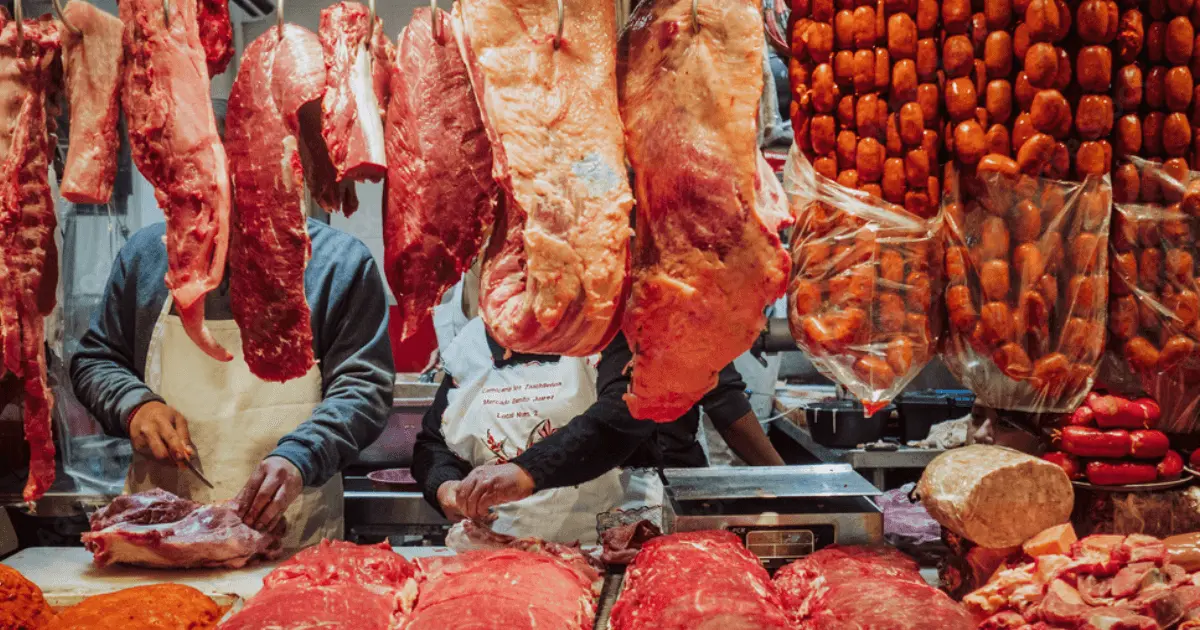Check Out Bagley Farms Meat Market Edwardsville IL for Farm-Fresh Meat and Specialized Cuts
Check Out Bagley Farms Meat Market Edwardsville IL for Farm-Fresh Meat and Specialized Cuts
Blog Article
Uncover the Art of the Butcher's Cut in a Modern Meat Market
In the ever-evolving landscape of contemporary meat markets, the butcher's cut has transcended its typical origins, merging olden craftsmanship with modern practices. What absolutely sets the modern-day butcher apart is their capability to build a deeper link between customers and the origins of their meat.
Evolution of Butchery Strategies
The evolution of butchery strategies reflects an abundant tapestry of development and adjustment driven by improvements in technology, modifications in customer demand, and a much deeper understanding of meat science. Historically, butchery was a craft gave through generations, with methods refined over centuries to optimize yield and flavor. The industrial change ushered in mechanization, transforming conventional techniques and allowing large-scale processing.
The mid-20th century saw butchery methods better refined by scientific insights right into muscular tissue biology and meat aging, boosting both tenderness and taste. Advancements like vacuum cleaner product packaging and refrigeration extended product shelf-life, enabling butchers to branch out offerings and enhance top quality control. This duration also marked the rise of specific devices, such as band saws and meat slicers, which boosted accuracy and performance in meat handling.

The 21st century has actually presented electronic modern technology into the butchery realm. Digital systems currently assist in tracking pet provenance and maximizing cuts to fulfill details consumer choices. In addition, a rebirth in artisanal butchery has actually emerged, blending traditional abilities with modern-day understanding to provide to customers looking for honest and sustainable meat alternatives. This advancement highlights a dynamic interplay between tradition and technology, conference contemporary demands while maintaining the craft's heritage.
Recognizing Meat Cuts
Comprehending the ins and outs of meat cuts is vital for both butchers and consumers seeking top quality and value. For butchers, exact cuts reflect ability and respect for the craft, guaranteeing marginal waste and ideal yield.

Recognizing muscle composition is essential; muscles made use of a lot more frequently by the pet have a tendency to be tougher and are best matched for sluggish cooking approaches, while less-used muscle mass, like those found in the loin, are extra tender and suitable for grilling or roasting. Knowledge with these distinctions encourages consumers to make enlightened options, enhancing their cooking endeavors.
Picking High Quality Meat
Selecting the appropriate meat involves more than just choosing an aesthetically appealing item from the display screen. The art of selecting high quality meat needs a click here to find out more discerning eye and understanding of details characteristics that symbolize quality and quality.
Second of all, think about the marbling, which refers to the white streaks of fat within the muscular tissue. Correct marbling is a vital indication of inflammation and taste, as it melts during food preparation, improving the meat's juiciness. Remember, higher marbling typically correlates with exceptional top quality cuts, such as USDA Prime.
Structure is an additional critical element; meat ought to feel solid to the touch, not slimy or excessively soft. Furthermore, be mindful of the scent. Fresh meat should have a clean, neutral smell, complimentary from any type of sour or off-putting odors.
Matching Cuts With Cooking Methods

Alternatively, harder cuts like brisket and chuck roast are abundant in collagen, which breaks down right into jelly when prepared slowly. These cuts are optimal for braising or sluggish roasting, permitting the meat to tenderize in time and establish deep, intricate tastes. Cuts such as short ribs and pork shoulder fare well with slow-cooking techniques, where prolonged cooking times change their robust textures into succulent dishes.
Lamb shanks and oxtail, which need extended cooking to tenderize, are best candidates for stewing or sluggish simmering. These methods coax out abundant, hearty flavors while maintaining moisture. have a peek at this website By comprehending the distinct attributes of each cut, cooks and home cooks alike can elevate their culinary creations, guaranteeing each dish is both satisfying and remarkable.
The Butcher's Duty Today
Navigating the advancing landscape of the modern-day meat market, the butcher's function today extends past mere prep work of cuts. Contemporary butchers are culinary craftsmens, teachers, and advocates for lasting methods. They bridge the void between the ranch and the fork by making sure ethical sourcing, recognizing animal husbandry, and focusing on transparency in the supply chain. This shift reflects the growing customer demand for quality over quantity, where provenance and pet welfare are extremely important.
In enhancement to crafting accurate cuts, butchers now engage straight with consumers, using cooking advice and customizing selections to match private requirements and preferences. Their know-how in meat aging, marbling, and flavor accounts empowers customers to make enlightened decisions, improving their cooking experiences. This customized solution exhibits the butcher's evolving function as a relied on expert in the kitchen.
Additionally, butchers are crucial in minimizing waste, using entire pets to develop diverse products such as sausages and stocks. This comprehensive technique not just values the pet but also lines up with modern sustainability objectives. This way, the modern butcher embodies both custom and technology, adjusting to an ever-changing market while maintaining the artistry and integrity of their craft.
Conclusion
The contemporary butcher's craft elaborately weaves standard strategies with modern-day innovations, page stressing lasting techniques and honest sourcing. Proficiency in recognizing varied meat cuts and high quality indications encourages butchers to provide educated recommendations, straightening particular cuts with ideal cooking approaches. This competence not only raises culinary experiences but also reinforces the link in between consumers and the beginnings of their food. By recognizing historic methods while embracing modern needs, the butcher's function remains vital in today's innovative meat market (bagley farms meat market edwardsville il).
Report this page